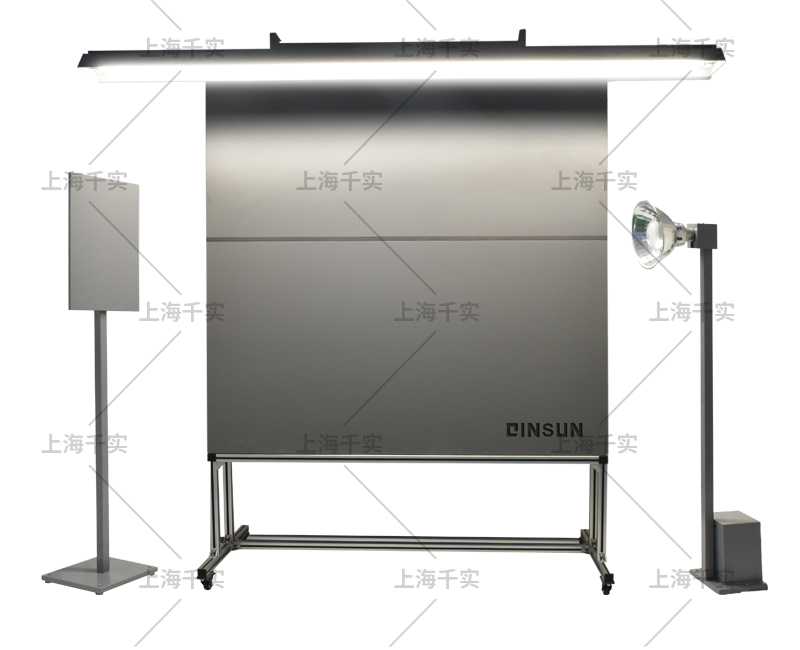The rating observation board is to evaluate the wrinkle, smoothness and stitch marks of textiles, as well as oil stains, etc., and provide accurate AATCC standard observation conditions. On the standard light source and evaluation board, the appearance of the sample is evaluated and graded by comparison with the standard chart.

Standards compliant:
AATCC 143/88, B&C 124/128/130
product manual:
Meet the inspection conditions specified by AATCC. At the same time, it is equipped with an optional bracket to support the three-dimensional specimen. At the same time, the light source can be switched. It is equipped with a cold light source of 2400mm (8ft) or 1200mm (4ft). The equipment includes casters for easy movement and can provide 2 standard sizes.
Technical Parameters:
1. The rating board can use 2400mm (8 feet) or 1200mm (4 feet) cool white lights.
2. The device is controlled by an electronic switch and adopts a high-frequency power supply control device.
3. The rating board can be installed on the wall or placed on a mobile cart.
4. Dimensions: 1830mm×270mm×1830mm (length×width×height)
5. Weight: 62kg (136lb)
Instructions:
1. Three experienced observers should independently rate each processed sample (multiple repeated washing, including hand washing and machine washing, with designated program options) (the item to be rated is the appearance of the fabric after washing) Smoothness, wrinkle retention of the fabric after washing, smoothness of the appearance of the seams of the fabric after washing, etc.).
2. Place the sample on the observation board, pay attention to the direction of placement (the warp of the fabric is the vertical direction, the wrinkles are the vertical direction, and the seam is the vertical direction). The sample should be placed carefully, and be careful not to make the sample Deformed and keep the same as before the evaluation. Place the standard sample photos on both sides of the sample. The standard sample photos used for the smoothness sample are the 3D appearance smoothness sample photos, the sample photos used for the fold flat angle are the plastic fold sample photos, and the sample photos used for the seam smoothness. It is a photo of the seams with single and double stitches.
3. The observer should stand directly in front of the sample, 1.2m away from the observation board. The normal change of the observer's observation height above and below 1.5m from the eye level is considered to have no significant effect on the evaluation result.
4. The hanging fluorescent lamp should be the only light source of the observation board, and all other lights should be turned off. According to the experience of many observers, the light emitted from the side wall close to the observation board may have an impact on the rating results.
5. Determine the grade of the standard sample that is closest to the appearance of the sample. Note that there are 6 levels of 3D appearance smoothness, and 5 levels of wrinkle retention and seam smoothness, of which level 5 has the best effect and level 1 has the worst effect.
6. Similarly, the observer should independently assess the grades of the other two samples. The other two observers should act in the same way, independently determining the level.
